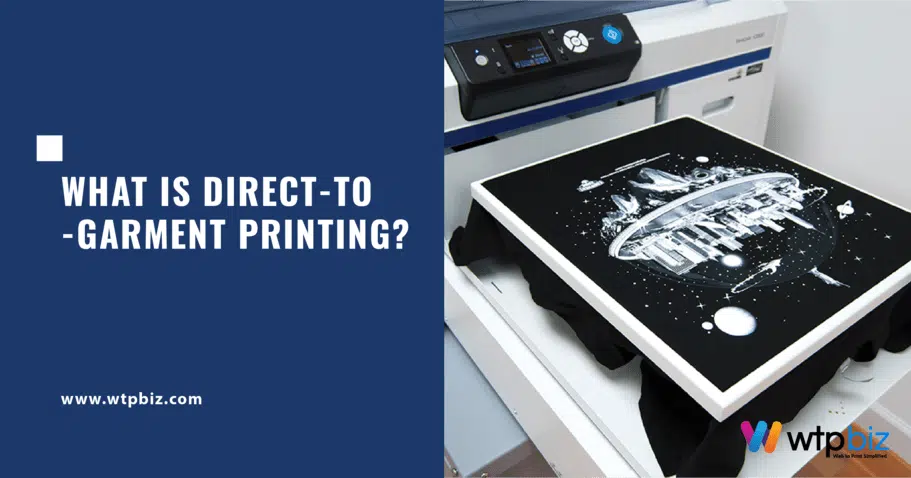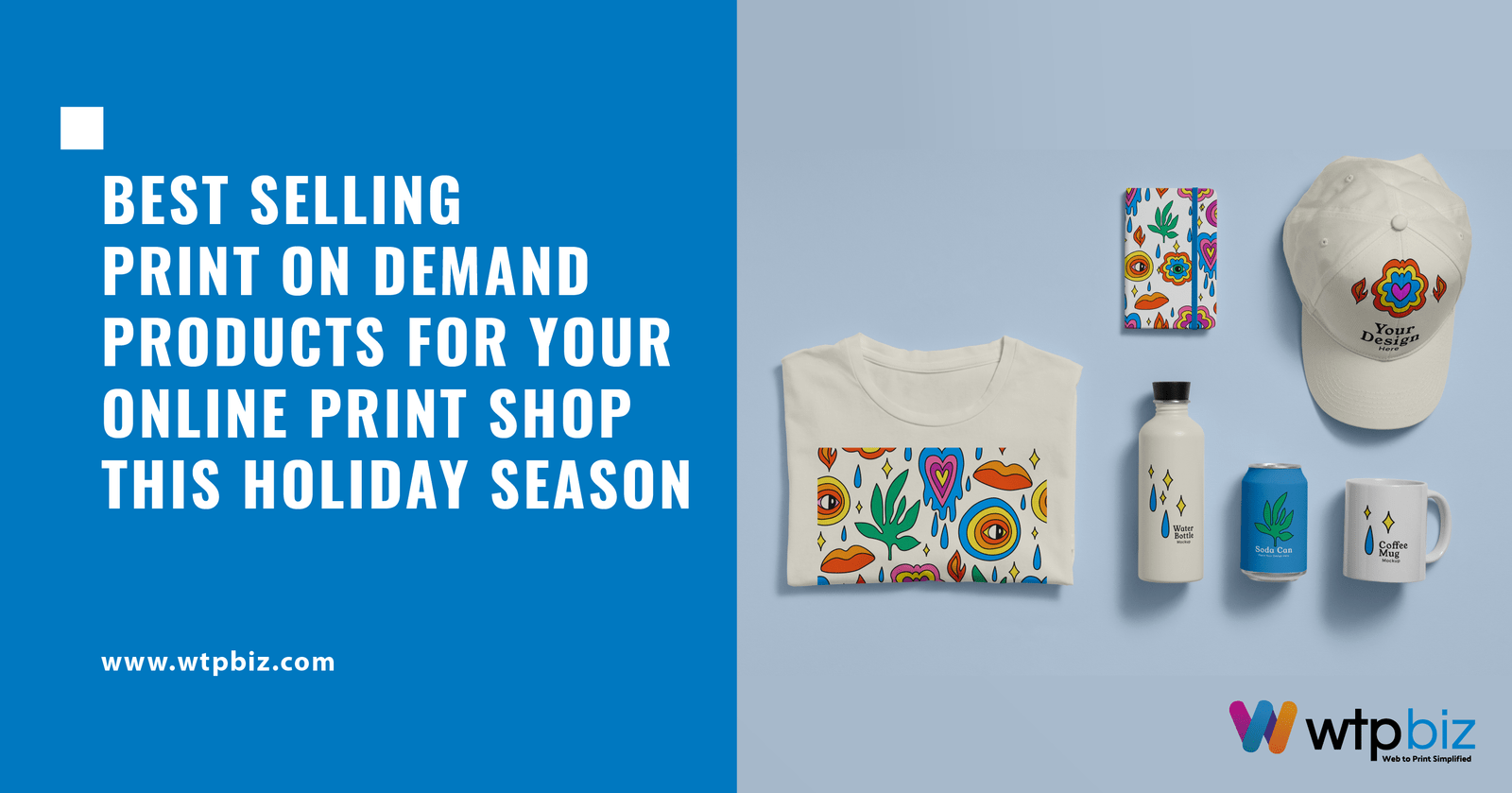What is Direct-to-Garment Printing?
Direct-to-garment (DTG) printing, also known as D2 printing, is an apparel decoration method in which designs and pictures are printed directly onto pre-sewn T-shirts, hats, hoodies, garments, shoes, tote bags, pillow covers, and other fabric products. Many DTG printers are utilized in screen-printing enterprises that embellish higher numbers of garments for brands, sports teams, and shops.
What is DTG Printing?
DTG printing allows screen printers to take on tasks with shorter runs and quicker turnaround times and embellish garments with changeable data or full-color photographic graphics. DTG T-shirt printer are also utilized in home-based businesses, promotional products companies, and gifting shops.
DTG printing eliminates the need for many screens, which means that it may be done in a smaller space and without the hassle of frequent maintenance. Moreover, the learning curve for DTG printing is a little less steep than screen printing, particularly for younger creative professionals or direct-to-garment printer for beginners who have grown up with digital cameras and graphics tools.
How does DTG Function?
Considering DTG can accurately capture complex images on a surface as pliable as a shirt or sweater, it is surprising to analyze how simple the working function of direct print to garment is. DTG is best conceptualized as computer-based home printing, except the paper is a shirt.
The direct-to-garment printer is similar to home printers in that they do not require a unique setup for each task and can produce infinite colors. Some DTG printers are also made by businesses that make normal inkjet printers but are simply adjusted to fit the increased bulk of clothing and employ inkjet textile inks rather than the ones you buy for your printer at the shop.
The CMYK color model is utilized in the printing process to replicate a computer image’s colors onto fabric accurately. CMYK stands for cyan, magenta, yellow, and K for black. For this reason, this model is also referred to as “four-color processing,” after the four ink colors that are typically combined to form the various shades used in the digital layout.
The inks attach directly to the fibers of the garment’s material, resulting in cotton, a fibrous material that is better for DTG printing than polyester – a much smoother substance. When a design is finished, and all the colors have been added, the ink is often dried using heat. An entire minute may be all it takes to accomplish this.
History of DTG printing
The technology of Direct-to-Garment printing (DTG) emerged in the USA in 1996 with Matthew Rhome’s first commercial DTG printer, the “Revolution.” Revolutionary for its time, stemming from injection printers (1950) that were available in every workplace. Rhome started exploring if they could print on diverse materials besides paper. Matthew Rhome was given the first DTG patent in 2000. In 2005 white ink was introduced to the market, overcoming the difficulty of printing on dark clothes.
How is DTG comparable to other conventional printing methods?
Unlike DTG, which requires essentially no setup, screen printing requires a costly and time-consuming first phase. However, for “small” orders (less than ten of a garment), where this expense is not spread amongst several items, DTG becomes more cost-effective.
Screen printing is more cost-effective for bulk orders since its per-unit cost is lower than DTG’s after initial setup. Screen printing is limited compared to direct-to-garment printing (DTG) in terms of detail and number of colors, but the screen-printed colors are more vivid.
Pros:
- Incredibly useful for mass production
- A spot-on match per Pantone standards
- Useful for a wide variety of textiles
- The highly polished final product.
Cons:
- Cost prohibitive for lower volume purchases
- Very pricy for even the most basic of designs.
Both Dye sublimation and direct-to-garment (DTG) printing use a computer to transfer digital pictures onto fabric. The primary distinction is that dye sublimation skips the liquid phase altogether by using heat to transform the ink directly from its solid form into a gas. As a result, polyester may be printed on because the gas produced by heating it permeates the fibers.
Pros:
- Best for full-cover printing
- Makes in large volumes and quickly
- coming up with original ideas; producing designs that look like photographs.
Cons:
- Only for use on pure white polyester.
- You can never get real blacks.
While direct-to-garment printing (DTG) bonds to fibers without the use of heat, heat transfers rely on pressure and heat to embed ink into the fabric’s surface. If you’re looking for a printing method, DTG is far superior to heat transfers.
Pros:
- Inexpensive alternative to sublimation printing
- Excellent for mass production
Cons:
- Designs can be short-lived
4. DTG Printing:
Direct-to-garment printing is printing onto a garment with a printing machine. Digital direct-to-garment (DTG) printing is a relatively recent technological advancement that provides the highest quality printed products. However, despite its popularity, DTG printing is not a cost-effective option for large orders.
Pros:
- The ideal size for making minimal amounts
- Unlimited color palettes with the highest fidelity
Cons
- Avoid at all costs if you’re dealing with high amounts
- Constraints on where you can put your design
Why Should You Use Direct to Garment?
The direct-to-garment printing method is used for intricate designs on limited-quantity cotton clothes. Direct-to-garment printing is an affordable and flexible choice for the fashion label owner or corporate customer that needs specialized garments.
Using digital photos allows for the simple creation of a software design, uploading to a supplier’s website, and its subsequent printing onto merchandise. In addition, the near-zero quality loss and spot-on reproduction guarantee a consistently high design standard.
Low setup costs and a plethora of color possibilities make this printing process ideal for occasional use or small-batch manufacturing. In addition, promoting the fact that your business is environmentally conscious can help you reach a wide audience.
Direct-to-fabric printing has limitations, but it is a viable option for high-quality promotional clothes if you order in sufficient quantities and select the proper garment.
Here are some reasons why you should use Direct to Garment:
- Digital Based: DTG printing eliminates the need for vinyl, screen separations, and screen exposures. DTG printing is the most cost-effective choice for short-run printing because of the cheap work setup fees.
- Personalization: Provide excellent service to all the customers while keeping overhead to a minimum. You can give them instantaneous, all-encompassing answers to their problems.
- Good print quality: Produce a stunning image in a matter of minutes. In contrast to screen printing, where the number of colors available is limited by the number of ink wells in the press, the number of colors possible with DTG is virtually limitless.
- Designed for low to moderate-budget projects: Direct-to-garment printing is a great option. Thanks to its automation and user-friendliness, even small runs may be made in a short amount of time with no ink wasted. DTG’s many uses make it easy to incorporate into existing business structures.
Advantages of Direct-to-garment printing
When compared to more conventional printing technologies, direct-to-garment printing has many benefits and some of which are:
- There are no initial costs or minimum order requirements.
- An incredibly quick procedure.
- Extensive palette to choose from.
- Delivers high-quality prints quickly, usually within a few hours after placing an order.
- Capable of printing full-color graphics on a variety of garments.
- Available for both mass production and short production runs.
- Works equally well on both white and black fabrics.
- Being aqueous, it has a low impact on the environment.
- Excellent for use on t-shirts worn at parties, promotions, and bachelor and bachelorette events.
- Capable of making designs using computer software, and you can easily go for web to print.
Disadvantages of Direct-to-garment printing
- It can be used on cotton garments
- Mass production is not cost-effective
- It is slower in comparison to other methods
- Limited design placement
Which designs are best with DTG?
Since the DTG fabric printer comes with many color possibilities, you can print nearly limitless color combinations, including intricate designs and photorealistic images. This is crucial for companies interested in experimenting with new hues and patterns.
When using DTG, opacities should be avoided at all costs. Elements that aren’t completely opaque don’t translate well in DTG printing since printers will try to make up for the missing color by spreading the ink, leading to a lot of gaps in the fabric. That’s why true colors or halftones are preferable for creating the illusion of semi-transparency. Aside from those restrictions, you are free to use as many colors and intricate patterns as you like.
Is direct-to-garment printing (DTG) environment-friendly?
DTG is a more environmentally friendly approach to the fashion industry than screen printing. For the most part, overproduction and fabric waste may be avoided by printing on demand with the clothes printing machine. On top of that, several DTG printer companies focus on developing cutting-edge technology that is also eco-friendly. These eco-friendly t-shirt printer machine consume less power and produce nearly no wastewater.
Do you think Direct-to-Garment (DTG) printing is the best option for your company?
Direct-to-garment printing eliminates unnecessary steps in preparing your goods for distribution to clients. You can relax about stocking up because most third-party t-shirt printer doesn’t require a minimum number of units to print DTG items. With this strategy, companies can take advantage of on-demand printing services.
Direct-to-Garment printing (DTG) allows for simultaneous printing of the complete pattern. Your order is processed immediately upon receipt of the print file because DTG does not have a color count and therefore does not require additional setup time to begin printing. With this printing model, you may confidently experiment with new ideas and expand into untapped markets. In addition, the product can be scrapped or replaced if sales are low.
What’s the Best Method for T-Shirt Printing?
There is no one best garment printer technology because they all have advantages and disadvantages. However, some advantages of DTG printing make it stand out from the crowd.
- Durable Designing: DTG printers produce just as durable designs as those printed with a screen-printer. You may print high-definition photos on the fabric without worrying about them fading or peeling away over time.
- Latest Technologies Used: The direct-to-garment (DTG) printing uses cutting-edge technology. Newer technologies are invariably more effective, and encouraging their development contributes to humankind’s long tradition of the invention. The high-quality graphics that DTG printing generates are ideal for graphic tees displaying intricate images.
- Good Print Quality: DTG printers provide crazy print quality. The quality of clothes printed with DTG technology is much better than that made during heat transfer printing. DTG printing eliminates the typical problem of designs wearing off after one or two years and leaves no trace of the printer being used on the garment. DTG printing, like silk screen printing, leaves no discernible texture on the garment, making it look more authentic than any other printing method.
Factors regulating the Costs of DTG Printing
Costs associated with direct-to-garment (DTG) printing of a pattern on a garment are affected by several variables.
- Firstly, you must consider the business’s scope and the company’s volume. Companies with higher volumes tend to charge a low price and vice versa.
- The next thing to consider is how each business prints garments using DTG technology. When it comes to direct-to-garment printers, the Epson F2000 and F2100 are the best of the best. Companies that employ different printers may provide cheaper costs, but the quality may suffer.
- The price of printing designs into garments varies depending on the size of your order. Most businesses will provide price cuts for large orders.
While direct-to-garment (DTG) printing may be more expensive than other methods, it can still be cost-effective for printing businesses. DTG printers help businesses save time and money because they don’t need as much preparation as other types of printing. DTG printing costs between $3 and $7 per garment, depending on the printing company. This cost is flexible and adapts to factors such as print area size, minimum order quantity, and the company’s monthly production volume.
Conclusion
DTG printing is the most efficient option for expanding your business. It eliminates the need for you to hold stock or handle shipment, making it possible to test new designs without worrying about the potential financial impact. Instead, you may focus more on developing your product line and marketing strategy, where the eco-friendly attributes of DTG printing can shine. Ensure to look for design intricacy, brand identity, and product quantity needs before you move toward printing.






